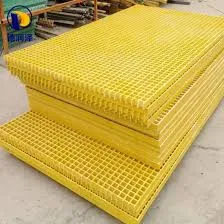
-
 Afrikaans
Afrikaans -
 Albanian
Albanian -
 Amharic
Amharic -
 Arabic
Arabic -
 Armenian
Armenian -
 Azerbaijani
Azerbaijani -
 Basque
Basque -
 Belarusian
Belarusian -
 Bengali
Bengali -
 Bosnian
Bosnian -
 Bulgarian
Bulgarian -
 Catalan
Catalan -
 Cebuano
Cebuano -
 China
China -
 China (Taiwan)
China (Taiwan) -
 Corsican
Corsican -
 Croatian
Croatian -
 Czech
Czech -
 Danish
Danish -
 Dutch
Dutch -
 English
English -
 Esperanto
Esperanto -
 Estonian
Estonian -
 Finnish
Finnish -
 French
French -
 Frisian
Frisian -
 Galician
Galician -
 Georgian
Georgian -
 German
German -
 Greek
Greek -
 Gujarati
Gujarati -
 Haitian Creole
Haitian Creole -
 hausa
hausa -
 hawaiian
hawaiian -
 Hebrew
Hebrew -
 Hindi
Hindi -
 Miao
Miao -
 Hungarian
Hungarian -
 Icelandic
Icelandic -
 igbo
igbo -
 Indonesian
Indonesian -
 irish
irish -
 Italian
Italian -
 Japanese
Japanese -
 Javanese
Javanese -
 Kannada
Kannada -
 kazakh
kazakh -
 Khmer
Khmer -
 Rwandese
Rwandese -
 Korean
Korean -
 Kurdish
Kurdish -
 Kyrgyz
Kyrgyz -
 Lao
Lao -
 Latin
Latin -
 Latvian
Latvian -
 Lithuanian
Lithuanian -
 Luxembourgish
Luxembourgish -
 Macedonian
Macedonian -
 Malgashi
Malgashi -
 Malay
Malay -
 Malayalam
Malayalam -
 Maltese
Maltese -
 Maori
Maori -
 Marathi
Marathi -
 Mongolian
Mongolian -
 Myanmar
Myanmar -
 Nepali
Nepali -
 Norwegian
Norwegian -
 Norwegian
Norwegian -
 Occitan
Occitan -
 Pashto
Pashto -
 Persian
Persian -
 Polish
Polish -
 Portuguese
Portuguese -
 Punjabi
Punjabi -
 Romanian
Romanian -
 Russian
Russian -
 Samoan
Samoan -
 Scottish Gaelic
Scottish Gaelic -
 Serbian
Serbian -
 Sesotho
Sesotho -
 Shona
Shona -
 Sindhi
Sindhi -
 Sinhala
Sinhala -
 Slovak
Slovak -
 Slovenian
Slovenian -
 Somali
Somali -
 Spanish
Spanish -
 Sundanese
Sundanese -
 Swahili
Swahili -
 Swedish
Swedish -
 Tagalog
Tagalog -
 Tajik
Tajik -
 Tamil
Tamil -
 Tatar
Tatar -
 Telugu
Telugu -
 Thai
Thai -
 Turkish
Turkish -
 Turkmen
Turkmen -
 Ukrainian
Ukrainian -
 Urdu
Urdu -
 Uighur
Uighur -
 Uzbek
Uzbek -
 Vietnamese
Vietnamese -
 Welsh
Welsh -
 Bantu
Bantu -
 Yiddish
Yiddish -
 Yoruba
Yoruba -
 Zulu
Zulu
Durable and Lightweight FRP Flooring Solutions for Various Applications
The Rise of FRP Flooring A Game-Changer in Construction
In recent years, the construction industry has witnessed a paradigm shift towards innovative materials that enhance durability, efficiency, and sustainability. Among these materials, Fiberglass Reinforced Polymer (FRP) flooring has emerged as a transformative solution, redefining the standards for flooring systems in various industries, including commercial, industrial, and residential sectors.
What is FRP Flooring?
FRP flooring consists of a matrix of fiberglass strands woven together and impregnated with a polymer resin, typically epoxy or vinyl ester. This composite material is engineered to provide exceptional strength-to-weight ratios, resistance to corrosion, and overall longevity, making it an increasingly popular choice for demanding environments where traditional flooring materials may fail.
Benefits of FRP Flooring
1. Durability One of the most attractive features of FRP flooring is its robustness. It can withstand heavy loads, impacts, and adverse conditions, making it ideal for warehouses, factories, and outdoor applications. Unlike traditional materials like wood or concrete, FRP does not splinter, crack, or delaminate, ensuring a longer lifespan.
2. Corrosion Resistance Many industries, such as chemical processing and wastewater treatment, involve exposure to corrosive substances. FRP flooring is highly resistant to chemicals, moisture, and other environmental factors, providing a safe and reliable surface that requires minimal maintenance.
3. Lightweight and Easy to Install The lightweight nature of FRP flooring simplifies transportation and installation. Workers can handle larger panels with ease, reducing labor costs and installation time. This efficiency is particularly beneficial for renovation projects or when replacing existing flooring systems.
4. Safety Features Safety is paramount in any workspace. FRP flooring is often designed with anti-slip textures that provide better traction underfoot, reducing the risk of slips and falls. Furthermore, many FRP products are non-conductive, making them suitable for environments where electrical safety is a concern.
5. Environmental Sustainability As industries strive towards sustainability, FRP flooring stands out as an eco-friendlier option. Many manufacturers produce flooring systems that are entirely recyclable, minimizing waste and environmental impact. Additionally, the longevity and durability of FRP reduce the frequency of replacements, contributing to lower overall resource consumption.
frp flooring

Applications of FRP Flooring
The versatility of FRP flooring allows it to be utilized in various applications across multiple industries
- Industrial Facilities In factories and manufacturing plants where heavy machinery operates, FRP flooring's strength and resistance to wear and tear make it an ideal choice.
- Commercial Spaces Retail stores and shopping centers benefit from the aesthetic flexibility and durability of FRP flooring, which can be designed in various patterns and colors to complement the overall decor.
- Marine and Offshore Platforms The marine industry frequently faces challenges related to moisture and corrosion, and FRP flooring provides a reliable solution that can withstand harsh marine environments.
- Transportation Hubs Airports and train stations can leverage FRP flooring for its lightweight and maintenance-free characteristics, ensuring that high foot traffic areas are safe and resilient.
Conclusion
As the demand for innovative and reliable flooring solutions continues to grow, FRP flooring stands out as a frontrunner in the market. Its unique combination of durability, corrosion resistance, and lightweight properties make it a valuable asset across various industries. As more construction professionals and facility managers recognize the benefits of FRP flooring, it is poised to become a staple in modern construction practices.
In summary, the evolution of flooring materials is capturing the attention of the industry, and FRP flooring exemplifies the future of durable, safe, and eco-friendly solutions. Its potential to revolutionize flooring systems cannot be underestimated, paving the way for safer, more efficient, and long-lasting environments in our workplaces and beyond.









